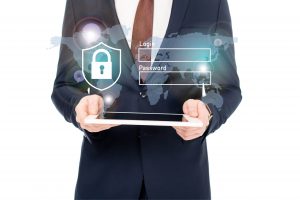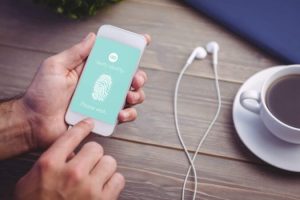
Using the same password in multiple online accounts can compromise your security, especially when these accounts are linked to your banking and credit card information. ABC News recently reported of a woman from Townsville, Queensland whose credit card details must have been stolen and sold on the black market resulting in multiple charges to her banking accounts all over the world including, Texas, Vancouver and London. Referred to as the Card-Not-Present (CNP) Trade, or having multiple transactions without needing the physical card to be present, the AusPayNet Chief Executive, Andrew White states that there’s an increase in online fraud after developments in security measures by banks and ATMs have made it harder for bank theft.
Hacking, skimming or phishing are some of the greatest threats in online security, especially since there’s no definite way on how to track and what to sanction the people that commit these crimes. From legitimate anti-virus security programs that you install in computers and mobiles phones to opting for two-factor authentication or changing your passwords regularly, there are simple ways on how we can help strengthen or add a layer to the security of our online details.
To prevent fraudulent online transactions, it is necessary to take precautionary measures and secure your accounts. Be vigilant and occasionally check your online details, especially when you see unusual activity in your network such as singing in from a location across the world that you haven’t been to.
Here are some friendly reminders to prevent online identity theft, especially concerning banking details and credit card information:
Change passwords every so often
If you are someone who marks your passwords and personal details as something to be remembered when you log in to websites or make online transactions, it might be time for you to change your password to prevent unwarranted online transactions if ever your personal details are already compromised. In changing your password, make sure not to use the same password as you have previously used on the website or the app that you are logging into to prevent a catalogue of the passwords that you go through. Do not reuse passwords from other websites in order to not compromise your security especially if you already experienced malicious intent on those sites as well as on your email accounts. Remember to mix numbers, letters and characters in no chronological order to make it hard for people or for bots to guess your details. If possible, opt to ‘not remember’ or ‘not save’ your login details to prevent chances of theft.


Opt for two-step or multi-factor authentication
Two-step or multi-factor authentication is another layer of security which allows you to proceed with logging in or fend off any unwarranted permission who seek to access your personal accounts. Usually done through mobile verification where the site that you are logging into will send you a text message containing a code that you’ll need to input in order to proceed; or through an email that you’ll need to click, two-step or multi-factor authentication requires further action that needs to be completed in real-time in order to proceed to the site or the account that you are logging into. Aside from mobile or email verification, two-step or multi-factor authentication also happens when you are redirected to login using apps that you are currently logged into such as Facebook and Google. For app verification, make sure to check your settings and adjust what data you want to share to the public, especially when apps share customer data to third-party companies.
Clear your browser cache and cookies
Log out of the website that you have finished using and clear your browser’s cache and cookies, especially if you are on sketchy sites that have asked for your personal information. Clearing your browser’s cache and cookies and even your browsing history can prevent the theft of personal details since you are removing your online footsteps especially when the websites that you visit have cookies that they share to third-party advertisers. If you recently did an online transaction where you’ve input your credit card details, or have just finished updating your online banking details, make sure to clear your browser of cache and cookies to prevent the theft of your details. Be cautious of what you download and install in your computers and mobile phones as well since there are programs out there that intend to spy on your computer, copy your details and use your profiles for illegal means such as that of fraudulent transactions.


Do a device audit
Doing a device audit can also help safeguard accounts by running a test to see what devices have attempted to and successfully able to access your accounts. In doing this, you can track suspicious login attempts, which may indicate that a third-party or a robot is trying to access your details without your permission. Before you install a device audit application, make sure to check which apps are legit and are compatible with your device cause rather than securing your accounts, installing rogue applications may cause more damage and further breach your online security especially if the app is asking for a lot of information which aren’t typical of a device audit program. On the other hand, install legitimate anti-virus or security programs as well so that you can occasionally clean up your computer, especially if you sometimes download files and access websites that are not secured.
Since the internet is a vast space and all its depths are yet to be governed by local or international laws such as the GDPR, there’s no harm in following these advice to safeguard not only your accounts but your identity as well. Take the extra step than take chances with data security especially since these are ways to manage your privacy amidst the vast public network which is the internet and all the corners—whether it’s the surface or the dark web—that it is composed of and where your data can be abused when mishandled because of security breaches caused by simple things such as not updating your passwords.



